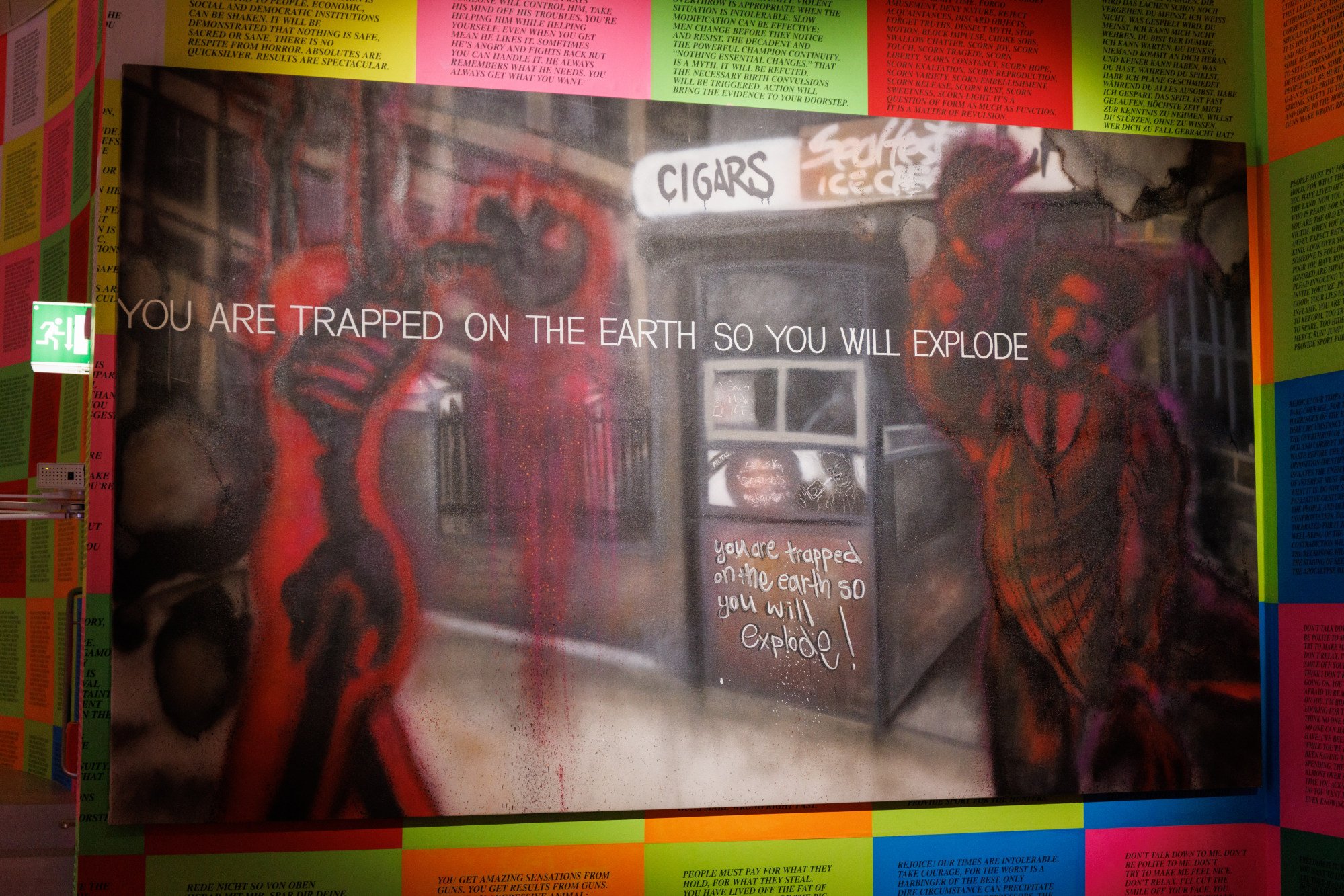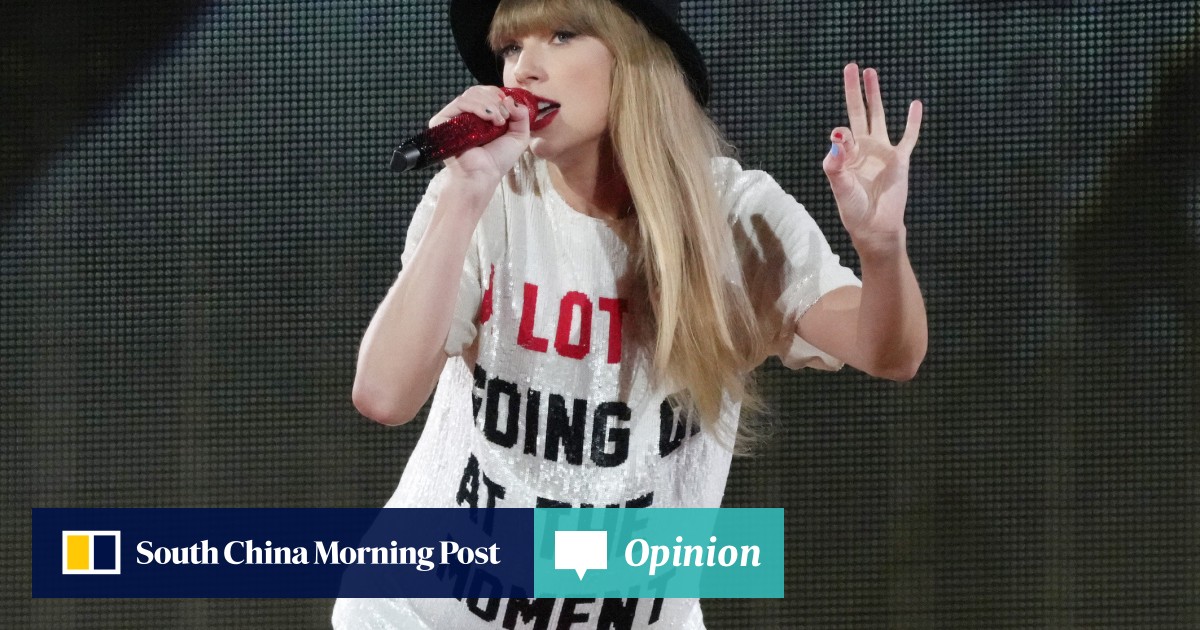Much has been (glitter-gel-) penned about Taylor Swift’s wardrobe over her various album eras, and about her language, including her changing accent, and her lyrics’ symbolism and imagery. There is also a lot going on where fashion and language intersect.
“NOT A LOT GOING ON AT THE MOMENT” was the language conveyed on Swift’s sequinned top worn in her “22” music video’s opening scene, the work of British-based designer Ashish Gupta.
Keywords “A LOT”, “EW”, “NEVER” and “EVER” were bolded in red. Swifties had been hoping that these red letters meant another of her Easter eggs – hidden messages in computer games, software, film, music – which would, anagram-like, eventually spell out her next production plans.
Such graphic T-shirts have, of course, been around for a while.
Their very first appearance was not in the fashion world, but in the 1939 film The Wizard of Oz, where three minions stuffing the scarecrow wore bright green T-shirts with the word “OZ” in white, and in the 1940s showcasing United States military branch logos.

T-shirts have long been more than just a fabric covering.
Becoming established as a staple in the 1960s, the once-plain white top, now adorned with typography, quotes or witty phrases, developed into a canvas, a medium for political, social and cultural statements.

American neo-conceptual artist Jenny Holzer’s word art, primarily in public urban landscapes, later featured on merchandise, including T-shirts.
Her pithy statements and longer discourse are always capitalised, with certain parts italicised, to “show some sense of urgency and to speak a bit loudly”. Certainly, as Hamnett believed: “If you want to get the message out there, you should print it in giant letters on a T-shirt.”
Such text-based fashion has attracted the attention of language researchers: in recent years, the study of linguistic landscapes has expanded beyond the urban landscape to explore other “scapes” such as smells, tattoos and clothing, examining “words we wear”, “banal cosmopolitanism” and “wearable ideologies”.

